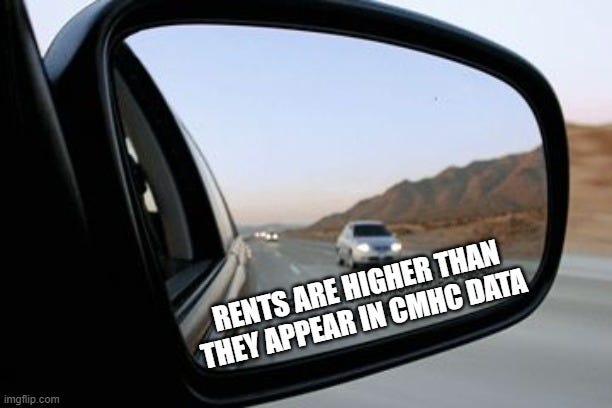The government can't afford rent, either
Rent supplements and the really big numbers behind the rental market
Last week, Nova Scotia’s housing minister got some bad press about hundreds of folks being denied rent supplements. The government upped the hurdle to qualify, from rent being 30% to 50% of income. In Minister Lohr’s own words:
We could see that the demand for the program was exceeding what the budget would offer," Lohr said. "So, we felt the need to prioritize ... this to those most in need, and that's why that decision was made."
What are these rent supplements?
The ‘Canada-Nova Scotia Targeted Housing Benefit (CNSTHB) for Renters’ is a jointly funded program by the feds and province. The original agreement was for $120 million over 8 years ($15 million per year). Last year, $23.8 million was spent across 5,250 beneficiaries, for an average of $380 per month.
Benefits are determined by an application, where applicants input their income and average rent by unit type according to CMHC for their area. In the example below (before the income threshold was upped to 50%), CMHC says rent for a 1-bed in Dartmouth is $816/mo and the applicant should be able to cover $495/mo, so the benefit is $321.
With the new rules, the province announced $21.6m to fund 8,000 supplements. I should say, the latest budget uses every word possible to make the $21m seem like an increase of $21m over last year (“more”, “added”). I think they are being slick (or else they’d boast more about doubling rent supports). It’s very possible I am wrong, but the province’s budget documents does not state how much they expect to spend in total for these supplements, and I could not reach a representative.
Assuming I’m not mistaken, average per-beneficiary rent supplements have been cut by 40% (from $380 to $225 per month). A story from April mentioned a continuing exemption for current beneficiaries, if you met the 50% threshold to begin with. Many others will no longer qualify at all, as the recent CBC story highlights.
What’s a rental in Dartmouth cost?
So clearly, faced with rising rent pressures, the province will be spreading the same pot of money across more people, while making it harder to qualify. But I want to point out another problem in all this: the use of CMHC’s average rent. CMHC collects the most comprehensive dataset on the rental market. In the latest Rental Market Report from October 2022, it reports average apartment rents at $978/mo in Dartmouth (averaging 4,800 1-bed apartments).
The problem is, there are no rentals available for $978/mo in Dartmouth. There aren’t many listings at all: 15 on rentals.ca. On Kijiji, the cheapest I found was $1400 for an apartment outside the circumferential highway. Killam apartments, a big REIT, starts at $1,525. Across Halifax, Rentals.ca reports average asking rents of $1,800.
The CMHC data, while comprehensive, is inherently back-ward looking. Because landlords often don’t hike rents until tenants move-out, and especially since the rent-cap started in 2020, average rents flatter the state of the available rental market.
So for low-income folks who get renovicted, or pushed out due to a fixed term lease1, the rent supplement program expects you to be able to find a rental for $1000, when you would be lucky to get a spot for $1,500. The gap between average and asking rents across Halifax is over $500/mo2. Put another way, we’d likely have to more than double the rent supplement program to provide existing beneficiaries enough money to meet the rental market where it is today. That doesn’t include the fact that if you used $1,800/mo as qualifying rent, many middle class folks would be eligible and program enrolment would explode.
How much is rent?
Many folks are holding off severe financial stress only because they are paying rent that is way below where the rental market is today. And the government is explicitly telling them they can’t afford to help.
Its clear why - CMHC’s rental market survey counts 55,000 rental units across HRM. Average rent for all units was $1,350. That means every month, renters pay $74 million dollars in rent. Or $885 million per year. The provincial and federal governments cornerstone rent support program can only afford less than 2% of rent paid.
I think the government should help more, but low-income renters are a weak political constituency, so its hard to see this rise above healthcare or other priorities. That’s why its so important to keep a healthy balance in the rental market and avoid crazy rent run-ups.
That relatively ‘affordable’ rental for $1400 was a 12-mo fixed term lease, so the tenant will have no rent cap protections after a year
There’s an interesting question about quality: are available, often newer apartments worth more than average








Nice rear view mirror Deny..... rent is higher then they would like to make it appear. So much for trying to keep people in independ living vs hospitals or nursing homes....